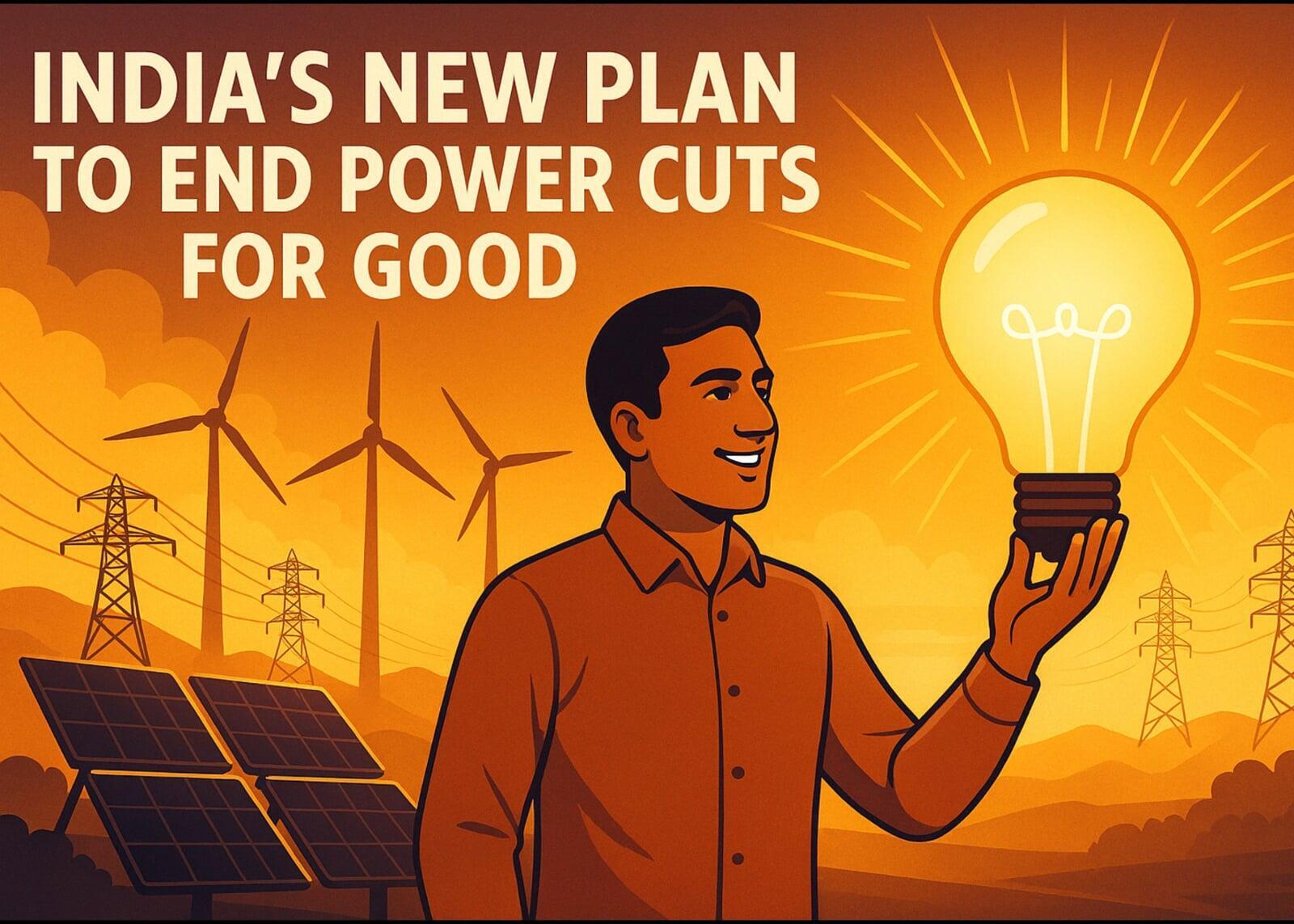The Story

India has taken a bold step toward solving one of its longest-running challenges—power cuts. The central government recently unveiled a comprehensive plan aimed at ensuring 24x7 electricity across the country. This move is expected to boost not just household comfort but also industrial productivity, digital infrastructure, and economic growth.
At the heart of this initiative is a large-scale investment in renewable energy, modern grid systems, and real-time power monitoring. The government plans to significantly increase the capacity of solar and wind power, aiming to generate over 500 GW of renewable energy by 2030. Alongside this, old transmission infrastructure will be upgraded to prevent overloads and reduce line losses.
A key part of the plan is the launch of a national smart grid program. This system will use AI and data analytics to predict demand patterns and automatically balance supply. It will also allow consumers to track their electricity usage and help utilities identify outages faster. In rural areas, the government is working on setting up decentralized solar microgrids that can work independently of the main grid. These microgrids are especially useful in areas where extending traditional power lines is difficult or expensive.
To support this massive transformation, the government is offering incentives to private players and state utilities that focus on clean and reliable energy. Funding will be provided through green bonds, international loans, and public-private partnerships. Additionally, DISCOMs (power distribution companies) will be restructured to improve efficiency, reduce debt, and ensure timely billing and collections.
Union Power Minister R. K. Singh stated, “This is not just about eliminating power cuts—it’s about building a future-ready energy ecosystem that supports growth, sustainability, and quality of life for all Indians.”
States will play a critical role in the rollout. They will be expected to follow a unified policy framework but have the flexibility to adapt the plan based on local needs. Already, states like Gujarat, Maharashtra, and Tamil Nadu have shown success with smart grid pilots and large-scale solar projects.
If implemented as intended, this plan could permanently change how India consumes and manages electricity. With rising temperatures and growing energy demands, the urgency to act has never been greater. While challenges remain—like funding, land availability, and coordination across states—the roadmap is clear.
India is no longer just managing its power crisis—it’s solving it. And if the plan succeeds, it could become a model for other developing nations battling similar issues.

